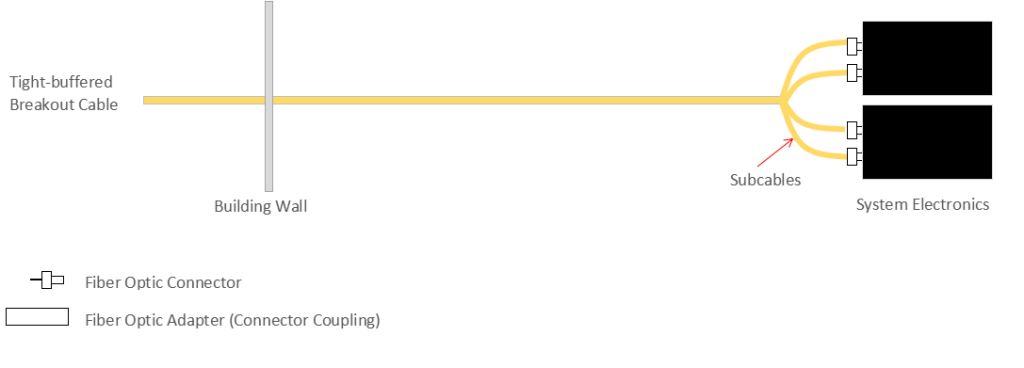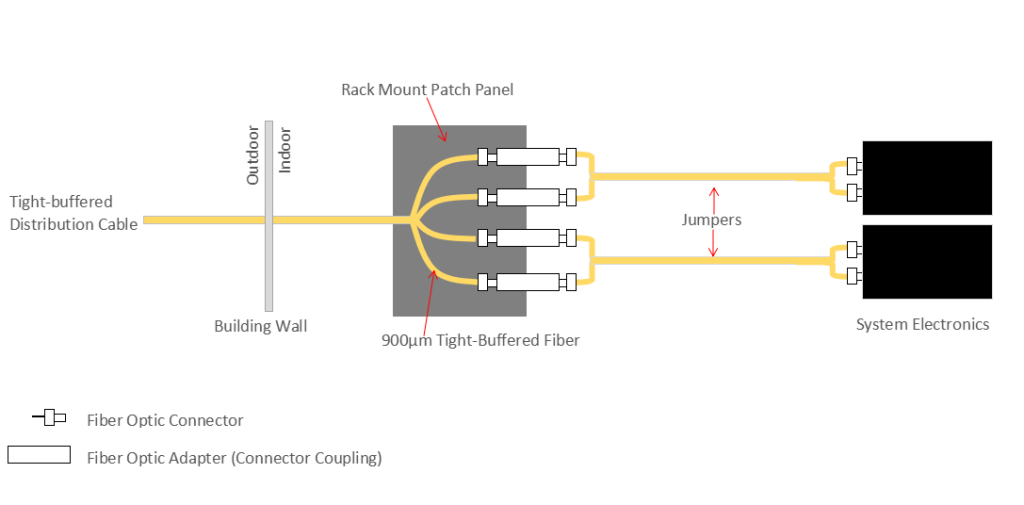Tight-buffered cables are optimal for indoor applications. With the design of armored layer, they are also used for indoor/outdoor applications. They are mostly applied in breakout cables and distribution cables. Today, I’d like to talk the difference between these two types of tight-buffered cables, mainly in two aspects.
Tigh-buffer breakout cables and distribution cables both consist of 900μm tight-buffered fibers. But they differ from each other in the cable structure.
Tight-Buffered Breakout Cables
The tight-buffered breakout cables consist of several individually jacketed tight-buffered fibers (basically simplex cordage) bundled together, as shown in picture below. A tight-buffered breakout cable has individual “subcables” within a primary outer cable sheath. Flame ratings of tight-buffered breakout cables are available in Plenum, Riser, and General (LSZH).
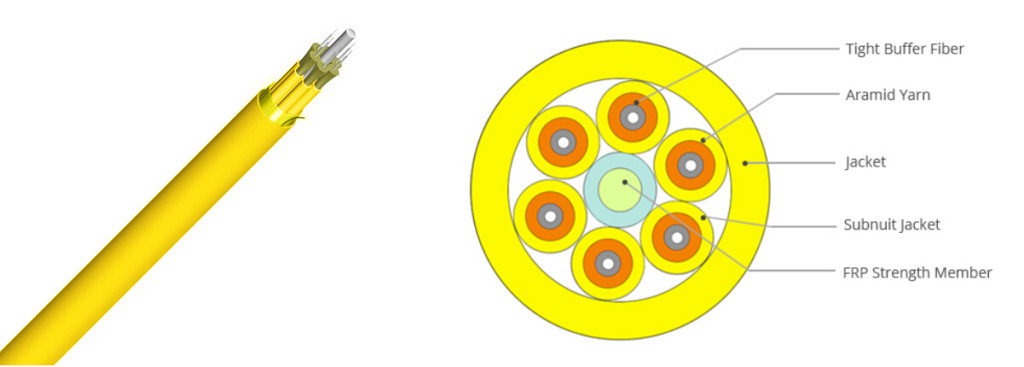
Cable Structure: Tight-Buffered Breakout Cable
Tight-Buffered Distribution cable
Tight-buffered distribution cable can be divided into two types—non-untized distribution cable and unitized distribution cable. The former contains several non-unitized tight-buffered fibers bundled under the same jacket. It is easy to identify the non-unitized cable and breakout cable through their cable structure. The unitized distribution cable consists of jacketed groups of tight buffered fiber, namely “subunits” consolidated in a single cable. It is similar with the breakout cable. But the “subunits” of unitized distribution cable is parts of the distribution cable while “subcables” of breakout cable is an individual fiber cable. Tight-buffered distribution cables are usually plenum or riser rated but can also be constructed as an indoor/outdoor or low-smoke (LSZH) cable. The following picture shows us the structures of non-unitized distribution cable and unitized distribution cable.
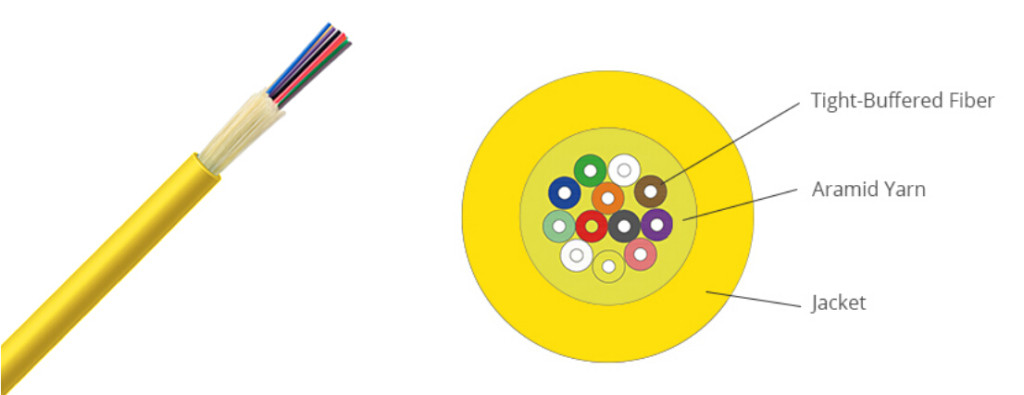
Cable Structure: Tight-Buffered Non-unitized Distribution Cable
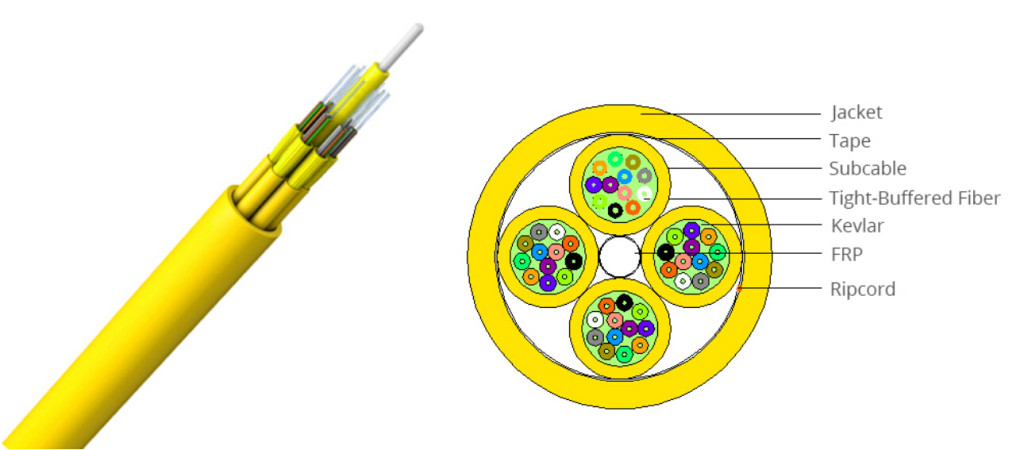
Cable Structure: Tight-Buffered Unitized Distribution Cable
Because of the difference in cable structure, the cable system layouts with tight-buffered breakout cable and distribution cable are also different. Tight-buffered breakout cable is the cable of choice for direct connectivity. Because each fiber has its own aramid strength member for connector tie-off so that the subcables can be directly connected to equipment without fear of fiber damage or connector/fiber end-face damage in most situations. See the picture below:
Tight-buffered distribution cables provide easy routing, and their 900µm tight-buffered fiber supports fast and robust field-terminations. As the following picture shown, the terminated fibers is placed in a patch panel, and jumper cables are used to interconnect panel and equipment.
Tight buffered cables provide improved reliability and quick termination for today’s cable installation systems. Tight-buffered breakout cables and distribution cables are two main types of the tight-buffered cables. This post presented their difference in cable structure and cable system layouts which help users more understand their features. Users can choose the right one according to their requirements of practical applications.
Good News for Buyer: A new inventory of tight-buffered distribution cables including non-unitized distribution cable and armored distribution cables is soon coming in FS.COM‘s USA Local warehouse (located in Seattle, USA) and accepting for reservation now. Once the inventory arrived, you can enjoy same-day shipping from United States and get your order as soon as possible. For more information, please contact sales@fs.com or live chat.

